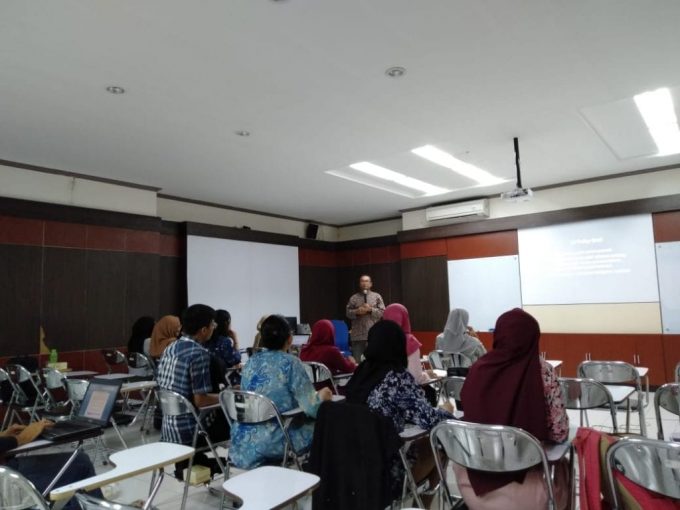
Friday (03/05) the Center for Indigenous and Cultural Psychology (CICP) organized a policy recommendation development Workshop whose materials were presented by Eddy Kiswanto, S.Si., M.Si., of the Centre for Population Studies and policy. This Workshop is devoted to the CICP internal research that is taking a master program. The Workshop takes place from 9 a.m. until 4 pm. Located in building B-104, this workshop was attended by internal research that comes from various interests in Master of Psychology Program. The event begins with material exposure first. Then the participants were asked to review all policy recommendations to be proposed by the CICP. It departs from the realization that CICP as a unit that produces a lot of research. So that the research container is able to produce a policy that is beneficial to community problems.
The policy brief is a short document that aims as a recommendation for policies for communities based on research results. Research that is the basis of policy brief should not only generate 1 policy brief but also the condition can produce some policy brief. Policy briefs should actually depart from a special topic that became concerned about solving the problem. Moreover, drafting policy briefs is necessary for the objectivity of the authors.
In designing a policy brief that should be considered is a view, as this will very attract the attention of the reader. Another thing that can attract the reader’s attention, including by creating compelling titles, attaching short and clear graphics, customizing interesting templates, and paying attention to the words that exist.
Because this document is designed to be known by the wider community. So that the author of the recommendation needs to detail attention to the technical things that can be reenacted by the public to read and realize the problem that builds the presence of policy recommendations.
Policy brief based on its structure consists of an executive summary in which the purpose is to filter the essence of the Policy brief, provide a general idea for busy readers, attracting readers to keep reading and appear on the top of the first page. Next, up is an introduction where further explaining the question “why”, then also the author is asked to explain the importance of the problem written, describing the purpose of the research, giving an overview of the findings, inferred, and fostering curiosity. The third part of the policy brief is the approach and outcome, where it contains the summary of facts, an overview of the problem and context, the overview of the research and analysis, nature is not too technical, the important part of this section is the author should give emphasis to the benefit and what opportunities can be obtained through policy recommendation. Further the drafting of the conclusions made for the interpretation of data, where the author gives a concrete conclusion, they also need to express the idea firmly, the idea must be balanced and can be maintained, if the hypothesis is not proven then the author should explain why so. The latter was the only implication and recommendation.
